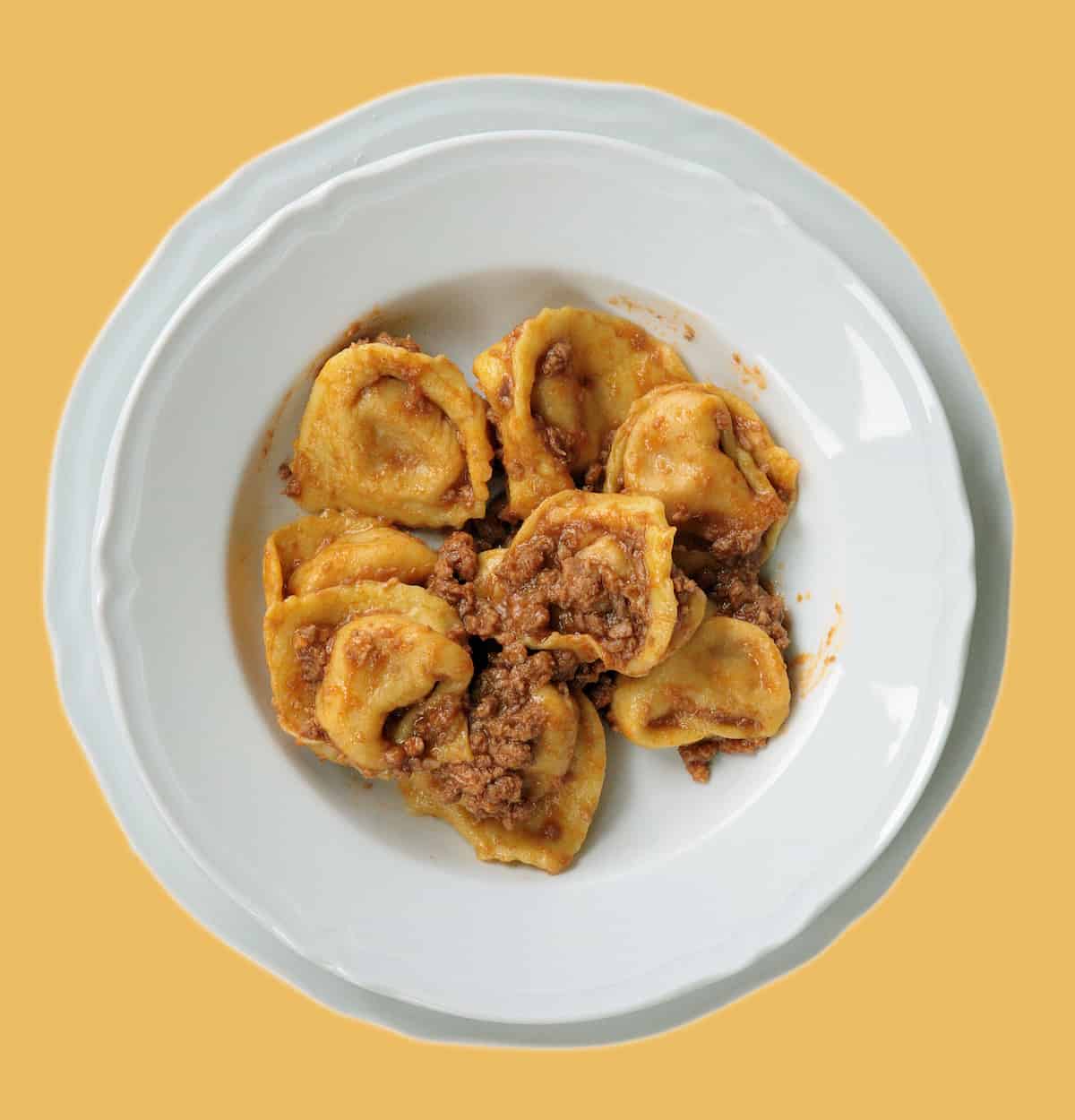Cappellacci

In the Ferrara area, small pasta parcels stuffed with pumpkin are known as cappellacci di zucca. Some people claim the term comes from the shape of the product, which vaguely resembles the straw hats worn by local farmers, hence "cappellacci", or caplaz in dialect.
The first historical mentions of cappellacci di zucca date back to the year 1000.
In 1584, “Dello Scalco”, the recipe book by Giovan Battista Rossetti, the chef employed at the court of the Duke Alfonso (II) d’Este, was published. In this text the first references to “tortelli di zucca con il butirro” can be found, which are very similar except for the addition of ginger, which was very common at the time.
Rossetti's text provides ample evidence of the importance of pumpkin at the banquets and dinners of the House of Este. In fact, it is not only a fundamental ingredient for filling cappellacci, but also appears in various dishes such as roast capon covered in pumpkin medallions. Caplaz, as they are known in local dialect, were therefore a delicacy for the House.
In actual fact, the combination of sweet and savoury of which cappellacci are emblematic, was dominant in 16th century cuisine. The most important culinary text of the 16th century written by Bartolomeo Scappi, the “secret chef” of Pope Pius V entitled “Opera” confirms the habit of sweetening and adding sugar to savoury and strong flavoured foods.
This play on sweet and savoury contrasts later developed within the great traditions of Ferrara. In fact, even if cappellacci were originally served with butter, the most traditional evolution of the dish is with a tasty meat ragout and a generous sprinkling of Parmigiano Reggiano cheese, nicely exalting the combination of the pumpkin, which is sweet but not overly so, with the savoury meat sauce and cheese.

